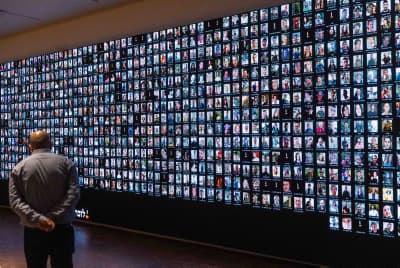3D models of October 7 Attack
Using 3D, here's how the Israel Antiquities Authority is making sure that no one will ever forget October 7
This groundbreaking project uses advanced technology to create virtual replicas, aiding investigation and preserving memory of the tragedy.

In a pioneering effort to document the aftermath of the October 7 attacks, the Israeli Antiquities Authority has launched an extraordinary project to create highly detailed 3D models of the devastated sites. This groundbreaking initiative aims to provide a comprehensive virtual experience of the attack locations, offering invaluable resources for investigation, education, and commemoration.
Key Points:
• Over 500 buildings across 20 attack sites have been documented so far
• Advanced photogrammetry technology is used to create hyper-realistic 3D models
• This project could serve as a virtual museum, investigative tool, and educational resource
• Approximately 10 million shekels allocated for the project
The Technology Behind the Project
The project utilizes cutting-edge photogrammetry technology, typically used for archaeological documentation, to map every detail of the attack sites. From bullet holes to structural damage, these models offer a chillingly accurate representation of the devastation.
"We use still cameras, small drones for close-up photos, a large drone with five cameras for aerial views, a portable laser scanner mounted on a van, and a stationary laser scanner," explains David Zell, Head of Research, Development, and Heritage at the Antiquities Authority. "We build digital models using images from the drones and point clouds from the laser scanners, creating highly accurate and detailed 3D models."
The scope of the project is immense, with each building requiring up to 35,000 photos and several days to map completely. To date, the team has collected around 350 terabytes of data, including over 2 million photos. The Antiquities Authority has invested in five high-performance computers to handle the massive computational demands of processing this data.
Potential Applications
1. Virtual Museum: Allowing global access to witness the aftermath
2. Legal Evidence: High-resolution models could be used in court proceedings
3. Investigative Tool: Assisting in forensic analysis and reconstruction of events
4. Educational Resource: Providing a powerful tool to teach about the attacks
5. Combating Denial: Offering irrefutable evidence of the events
6. Reconstruction Planning: Aiding organizations like Amigour in assessing damage and planning rehabilitation efforts
Ami Shahar, Director of Conservation at the Antiquities Authority, emphasizes the project's potential as a national treasure: "These models could become a virtual museum for future generations. They will allow people to see and experience the past, similar to how we learned about the Holocaust through books, photos, and films."
International Reception and Challenges
While the project has garnered interest from international colleagues, Prof. Moshe Caine from Hadassah Academic College Jerusalem notes some reluctance to engage with the sensitive material due to current geopolitical tensions. He also highlights the technical challenges faced by the team, including difficult lighting conditions and the emotional toll of documenting such traumatic scenes.
The Future of Commemoration
As the project progresses, debates have arisen about the balance between virtual and physical commemoration. Shimon Elkabetz, who lost his daughter in the attacks, argues for the importance of preserving physical sites alongside digital documentation.
"The digital memory is like a flight simulation... But I think there is no substitute for the real thing: the walls sprayed with bullets and the smell of death," Elkabetz states. He advocates for preserving certain areas as physical monuments, believing that tangible reminders are critical for preventing future tragedies.
The Antiquities Authority's work ensures that the events of that day will never be forgotten, providing a virtual window into one of Israel's darkest hours while also sparking important conversations about the nature of remembrance in the digital age.